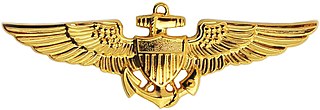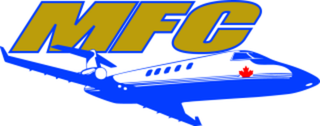Related Research Articles

A flight simulator is a device that artificially re-creates aircraft flight and the environment in which it flies, for pilot training, design, or other purposes. It includes replicating the equations that govern how aircraft fly, how they react to applications of flight controls, the effects of other aircraft systems, and how the aircraft reacts to external factors such as air density, turbulence, wind shear, cloud, precipitation, etc. Flight simulation is used for a variety of reasons, including flight training, the design and development of the aircraft itself, and research into aircraft characteristics and control handling qualities.

A private pilot licence (PPL) or, in the United States, a private pilot certificate, is a type of pilot licence that allows the holder to act as pilot in command of an aircraft privately. The licence requirements are determined by the International Civil Aviation Organisation (ICAO), but implementation varies widely from country to country. According to the ICAO, it is obtained by successfully completing a course with at least 40 hours of flight time, passing seven written exams, completing a solo cross-country flight, and successfully demonstrating flying skills to an examiner during a flight test. In the United States, pilots can be trained under Part 141 of Title 14 of the Code of Federal Regulations, which allows them to apply for their certificate after as few as 35 hours. However, most pilots require 60–70 hours of flight time to complete their training. The minimum age for a student pilot certificate is 14 for balloons and gliders and 16 for powered flight. The minimum age for a private pilot certificate is 16 for balloons and gliders, and 17 for powered flight. Pilots can begin training at any age and can solo balloons and gliders from age 14 and powered aircraft from age 16.
The airline transport pilot license (ATPL), or in the United States of America, an airline transport pilot (ATP) certificate is the highest level of aircraft pilot certificate. In the United States, those certified as airline transport pilots (unconditional) are authorized to act as pilot in command on scheduled air carriers' aircraft under CFR 14 Part 121. In the UK, pilots must hold an ATPL before they can be pilot in command on an aircraft with nine or more passenger seats.

In the US, an aircraft maintenance technician (AMT) is a tradesperson and also refers to a licensed technical qualification for carrying out aircraft maintenance. AMTs inspect and perform or supervise maintenance, preventive maintenance, repairs and alteration of aircraft and aircraft systems.
Pilot licensing or certification refers to permits for operating aircraft. Flight crew licences are regulated by ICAO Annex 1 and issued by the civil aviation authority of each country. CAA’s have to establish that the holder has met a specific set of knowledge and experience before issuing the licence. The licence, with added ratings, allows a pilot to fly aircraft registered in the licence issuing state.

Pilot certification in the United States is typically required for an individual to act as a pilot-in-command of an aircraft. It is regulated by the Federal Aviation Administration (FAA), a branch of the U.S. Department of Transportation (USDOT). A pilot may be certified under 14 Code of Federal Regulations (CFR) Part 61 or 14 CFR Part 141. Pilots may also be certified under 14 CFR Part 107 for commercial drone operations.
Pilot licensing in the United Kingdom is regulated by the Civil Aviation Authority (CAA).
An instrument rating is an authorization required for a pilot to fly under instrument flight rules (IFR). In the United States, the rating is issued by the Federal Aviation Administration.
The Aircrew Badge, commonly known as Wings, is a qualification badge of the United States military that is awarded by all five branches of armed services to personnel who serve as aircrew members on board military aircraft. The badge is intended to recognize the training and qualifications required by aircrew of military aircraft. In order to qualify as an aircrew member and receive the Aircrew Badge, such personnel typically undergo advanced training in aircraft in-flight support roles.

The Singapore Flying College is a CAAS approved flight school based in Singapore. Established in 1988 under the Singapore Airlines Group, it is the training school for cadet pilots with Singapore Airlines, Scoot and Singapore Airlines Cargo.

A flight instructor is a person who teaches others to operate aircraft. Specific privileges granted to holders of a flight instructor qualification vary from country to country, but very generally, a flight instructor serves to enhance or evaluate the knowledge and skill level of an aviator in pursuit of a higher pilot's license, certificate or rating.

A naval aviator is a commissioned officer or warrant officer qualified as a crewed aircraft pilot in the United States Navy or United States Marine Corps. United States Coast Guard crewed aircraft pilots are officially designated as "Coast Guard aviators", although they complete the same undergraduate flight training as Navy and Marine Corps crewed aircraft pilots, and are awarded the same aviation breast insignia.

The WINGS Pilot Proficiency Program is a voluntary pilot training and safety initiative supported by the FAA Safety Team division of the Federal Aviation Administration in the United States. The program was created by advisory circular AC 61.91 on May 21, 1979 as the Pilot Proficiency Award Program, and it has been continuously developed to promote air safety by encouraging general aviation pilots to maintain flying proficiency through the use of online learning, in-person seminars, and tailored flight training.

The Moncton Flight College (MFC) is a pilot training school based at the Greater Moncton International Airport (CYQM) in Dieppe, New Brunswick, Canada. They have a second location at the Fredericton International Airport (YFC) in Lincoln, NB. In a year, MFC has the capacity to train 450 students between the Moncton and Fredericton Campus. Currently the Moncton Campus offers domestic and international programs with a 260-student capacity and a staff of 55. The Fredericton campus is primarily for Chinese student training with some modular based flight training and has a capacity of 190 students and employs 70 people. Both of the campuses have on-site kitchens and residences. MFC is the largest private flight school in Canada. It is also one of six, out of 150 schools in Canada, to be given integrated status. The college has trained over 20,000 pilots from approximately 70 countries since 1929. MFC has an approved FTU, ATO and AMO from Transport Canada and also has CAAC (China) approval.
A safety pilot is a rated pilot who helps maintain visual separation from other aircraft, clouds, and terrain while another pilot is wearing view limiting devices for the purposes of simulating instrument conditions.
Ground Instructor is a certificate issued in the United States by the Federal Aviation Administration. There are three classes of holder, licensed to provide the ground instruction element in the training of three groups:

The Naval Air Training and Operating Procedures Standardization (NATOPS) program prescribes general flight and operating instructions and procedures applicable to the operation of all United States naval aircraft and related activities. The program issues policy and procedural guidance of the Chief of Naval Operations (CNO) and the Commandant of the Marine Corps (CMC) that is applicable to all United States Navy (USN) and United States Marine Corps (USMC) aviation personnel.

The Directorate General of Civil Aviation (DGCA) is a statutory body of the Government of India to regulate civil aviation in India. It became a statutory body under the Aircraft (Amendment) Act, 2020. The DGCA investigates aviation accidents and incidents, maintains all regulations related to aviation and is responsible for issuance of licenses pertaining to aviation like PPL's, SPL's and CPL's in India. It is headquartered along Sri Aurobindo Marg, opposite Safdarjung Airport, in New Delhi. The Government of India is planning to replace the organisation with a Civil Aviation Authority (CAA), modelled on the lines of the American Federal Aviation Administration (FAA).
Civil Aerospace Medical Institute (CAMI) is the medical certification, education, research, and occupational medicine wing of the Office of Aerospace Medicine (AAM) under the auspices of the Federal Aviation Administration Office of Aviation Safety. The Institute's primary goal is to enhance aviation safety.

BAA Training is an aviation training centre, headquartered in Vilnius, Lithuania and operating globally. Certified as an Approved Training Organization (ATO), BAA Training offers Fixed or Rotary wing Ab Initio, Type Rating, Cabin Crew, Ground Handling, Flight Dispatcher training including online training courses and has a capacity to prepare approximately 1,000 aviation professionals yearly. BAA Training clients come from 96 countries. Ab Initio school with its two flight bases in Spain and the fleet of 22 aircraft has over 200 students. Currently, BAA Training operates 8 full flight simulators (FFS): 4 FFS at training centre in Vilnius, Lithuania, 2 FFS in Hoh Chi Minh City, Vietnam, 1 FFS in Zhengzhou City in China, 2 FFS in Barcelona, Spain. All in all, through the extensive network of 69+ FFS in 29+ locations, BAA Training is ready to provide aviation training worldwide for more than 14 aircraft types.
References
- ↑ "FSIMS, Volume 3, Chapter 20". Federal Aviation Administration. Retrieved 22 May 2015.
- ↑ "Part 135 Check Pilot (Check Airman) Functions". Orders & Notices. Federal Aviation Administration. Retrieved 22 May 2015.